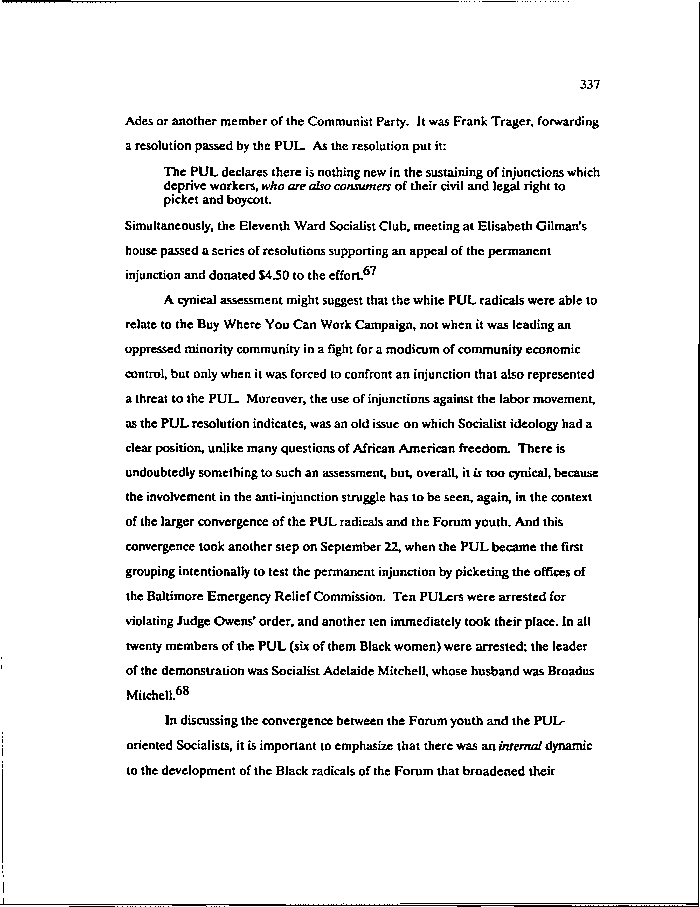|
337
Ades or another member of the Communist Party. It was Frank Trager, forwarding
a resolution passed by the PUL. As the resolution put it:
The PUL declares there is nothing new in the sustaining of injunctions which
deprive workers, who are also consumers of their civil and legal right to
picket and boycott.
Simultaneously, the Eleventh Ward Socialist Club, meeting at Elisabeth Oilman's
house passed a series of resolutions supporting an appeal of the permanent
injunction and donated $4.50 to the effort"'
A cynical assessment might suggest that the white PUL radicals were able to
relate to the Buy Where You Can Work Campaign, not when it was leading an
oppressed minority community in a fight for a modicum of community economic
control, but only when it was forced to confront an injunction that also represented
a threat to the PUL. Moreover, the use of injunctions against the labor movement,
as the PUL resolution indicates, was an old issue on which Socialist ideology had a
clear position, unlike many questions of African American freedom. There is
undoubtedly something to such an assessment, but, overall, it is too cynical, because
the involvement in the anti-injunction struggle has to be seen, again, in the context
of the larger convergence of the PUL radicals and the Forum youth. And this
convergence took another step on September 22, when the PUL became the first
grouping intentionally to test the permanent injunction by picketing the offices of
the Baltimore Emergency Relief Commission. Ten PULers were arrested for
violating Judge Owens' order, and another ten immediately took their place. In all
twenty members of the PUL (six of them Black women) were arrested; the leader
of the demonstration was Socialist Adelaide Mitchell, whose husband was Broadus
Mitchell.68
In discussing the convergence between the Forum youth and the PUL-
oriented Socialists, it is important to emphasize that there was an internal dynamic
to the development of the Black radicals of the Forum that broadened their
|

